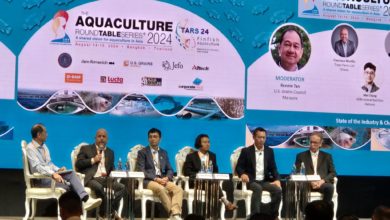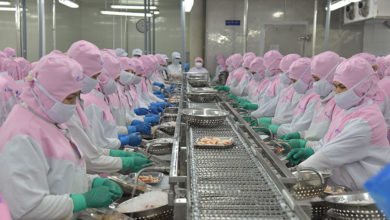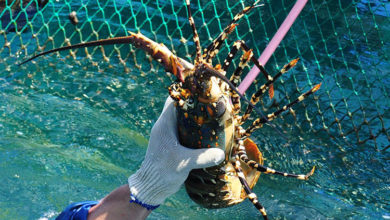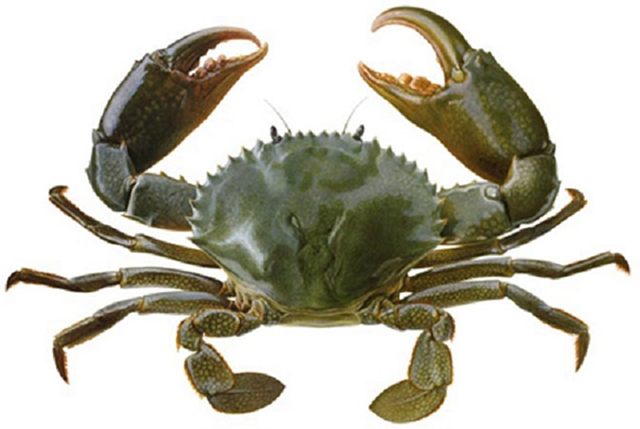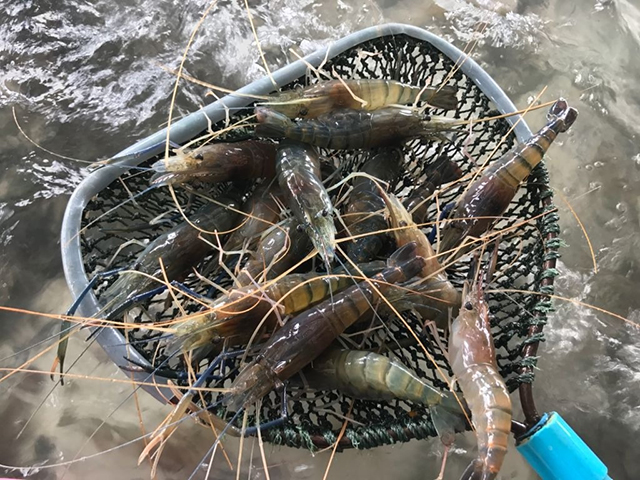Green farming – A strategic approach to sustainable shrimp production
Green production has become an inevitable global trend, and the shrimp industry is no exception. Embracing this approach is a strategic move to sustain its position and boost market competitiveness.
The shrimp industry faces numerous challenges beyond diseases, with polluted farming environments being the most pressing issue. Addressing this requires comprehensive solutions across the production chain, including better farming area planning, research, and the application of advanced, sustainable technologies. Emphasis should also be placed on reducing carbon emissions, minimizing solid waste, and safeguarding the environment.
Ho Quoc Luc, Chairman of Sao Ta Foods Joint Stock Company, stated that adopting a green production model will help the shrimp industry comply with environmental laws, balance emissions, treat wastewater, use renewable energy, ensure animal welfare, and meet other requirements under government-signed free trade agreements.
Producing one ton of shrimp requires 0.5 hectares of land, 6,000-9,000 cubic meters of water, and emits about 10.5 tons of CO2. Of this, 50% comes from energy used in the aeration system, 30% from feed, and 16% from biological activities in the pond.
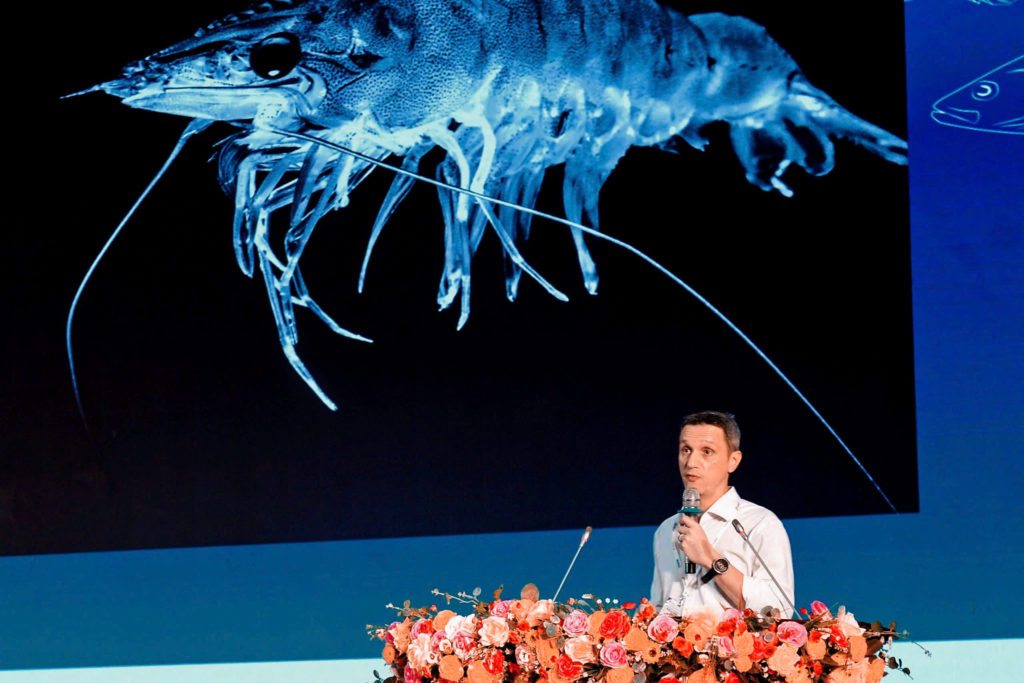
Recently, shrimp farmers have implemented various scientific advancements in shrimp farming, helping reduce greenhouse gas emissions, water usage, and environmental pollution. These include recirculating water systems, microbial technology, energy-efficient paddle wheels, efficient feed management to limit excess emissions, biogas digesters for waste treatment, and shrimp manure presses for fertilizer production. As the result, these solutions have significantly decreased waste and emissions.
At the recent “Connect – Reach Far” symposium, Dr. Nguyen Thanh My, Chairman of Mylan Group and CEO of Rynan Holdings JSC, proposed using AI to manage water quality, reduce greenhouse gas emissions, and minimize antibiotic residues in shrimp farming. By leveraging smart sensors and data analysis, AI can provide real-time data on water quality, oxygen levels, temperature, salinity, and more. This model, successfully piloted in key shrimp farming areas in Vietnam, has shown promising results, including a 20-30% increase in shrimp yield and significant cost reductions in environmental treatments. The success paves the way for scaling the model nationwide for sustainable aquaculture development. However, widespread implementation requires both policy support and farmer training programs.
The shrimp industry is expected to face challenges in 2025. The production of black tiger shrimp is expected to experience significant growth in China, Vietnam, Indonesia, and India, leading to intensified competition. Moreover, some shrimp-consuming countries are focusing on developing their domestic aquaculture, increasing barriers such as quality standards, production methods, and traceability for imported shrimp. To ensure sustainable growth, a “green transition” throughout the supply chain is essential, accompanied by a well-structured roadmap for all stages. Investing in technology and environmental protection is both a responsibility and an opportunity for Vietnam’s shrimp industry to boost its global competitiveness.
The green transformation of the shrimp industry requires substantial investment in technology and infrastructure, which will impose significant financial pressure on small-scale producers. Additionally, the lack of knowledge and technical expertise in sustainable production is a pressing challenge. There are also barriers in reaching consumers and ensuring stable prices for “green” shrimp products. Environmental pollution from shrimp farming, especially in concentrated areas, remains a major issue that needs urgent solutions. Close collaboration between stakeholders, including the government, businesses, and shrimp farmers, will be essential to advancing this process.
The main theme of the VietShrimp 2025 Exhibition, scheduled for March 26-28, 2025, in Can Tho, will be “Greening Farming.” The event will gather leading companies from Vietnam’s shrimp industry, offering a platform to showcase cutting-edge technological solutions and modern farming models aimed at accelerating the sustainable development of shrimp farming areas.
For more detailed information about the program, please contact
VietShrimp 2025 Communication Department – Vietnam Fisheries Society
Address: 3rd Floor, Building A7, No. 10 Nguyen Cong Hoan, Ba Dinh, Hanoi
Phone: (024) 6686 5979 | (024) 3771 3699
Email: vietshrimp@gmail.com
Mr. Duong Nghia: 0944 663 828 | Ms. Dang Nga: 0383 299 231


